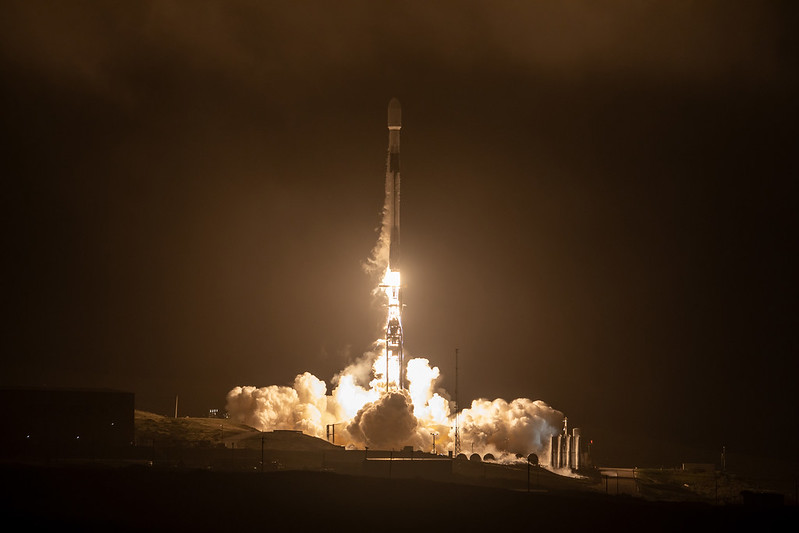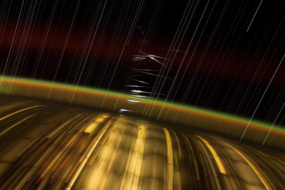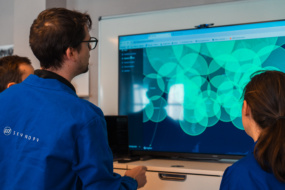Happy belated Transporter launch day to all who celebrate.
At 2:48am Saturday, SpaceX launched the Transporter-7 mission on a Falcon 9, carrying 51 customer payloads to new homes in orbit.
These rideshare missions are big days for small satellite companies that rely on the comparatively low cost to send their birds to orbit. On this flight, SpaceX safely delivered batches of EO satellites, sensors, OTVs, and precious cargo for first-time fliers. Here’s our highlight reel and recap of the riders on the mission.
Sateliot’s IoT solution
Sateliot, a Barcelona-based startup specializing in satellite IoT connectivity, sent its first commercial 5G nanosatellite using the standard 5G IoT protocol to orbit with the Transporter-7 bunch.
Connecting the IoT: Sateliot has been working for the past five years to develop a standard for connecting IoT devices over a space-based 5G network.
- The company has secured roaming agreements with 40 mobile network operators and mobile virtual network operators around the world for permission to deploy its services.
- Sateliot has already signed €25M ($27M) in binding orders for its service next year, CEO Jaume Sanpera told Payload.
Sateliot launched its first satellite in March 2021. The nanosat launched this morning is a demonstration of the 5G connectivity technology and will be the first of the commercial constellation.
The next four satellites are slated to launch on Transporter-9, at which point, Sanpera said, they’ll have the capability to begin initial services. After that, the company intends to deploy 64 sats by 2024 and the full constellation of 256 by 2025.
Adler-2 and Tilebox
The second in a series of in-space debris monitoring satellites built and operated by Spire also hitched a ride on Transporter-7 to detect and measure clutter in LEO. The Adler-2 satellite is a 6U cubesat equipped with a foldable sensor array, a radar instrument, and a polarimeter for looking at clouds and aerosols.
Midstream monitoring: Tilebox, a software company building a platform to make it easier to manipulate satellite data, is acting as the middleman between the Adler satellites and Earth. The midstream platform allows scientists back home to develop modeling tools and algorithms to analyze the data more easily.
- The goal: to lower cloud processing costs and speed up the adoption of satellite data tools across many industries.
Eyes in space
This launch was a big one for small EO companies setting up their constellations and new types of monitoring in LEO. A handful of companies sent their very first commercial satellites to orbit this morning:
- Tomorrow.io, a space-based weather forecasting startup
- Wyvern and Orbital Sidekick, two EO companies deploying hyperspectral sensors for agriculture and oil & gas monitoring, respectively
Not everyone was a first-timer. GHGSat, a Canadian emissions monitoring startup, deployed three satellites to continue identifying emissions sites around the world. Unseenlabs, Spire, HawkEye 360, and Satellogic also added birds to their growing constellations.
Best of the rest
While SpaceX did not release the full mission manifest, there are certainly plenty of highlights we can point to.
- Two OTVs, Vigoride-6 for Momentus ($MNTS) and D-Orbit’s vehicle, deployed suites of customer sats in orbit.
- Exolaunch deployed 21 of the satellites riding on the mission, 50% of which were new customers.
- Several student-built payloads rode on the mission, including the DISCO-1 radio and science experiment, the Sapling-2 radio networking demonstrator, and the RoseyCubesat-1 satellite carrying a camera for high school student observations.
- AstroForge, a company hoping to eventually mine asteroids, launched a spacecraft designed to test its asteroid material refinement technique in orbit.
- Kenya deployed Taifa-1, its first EO bird.




